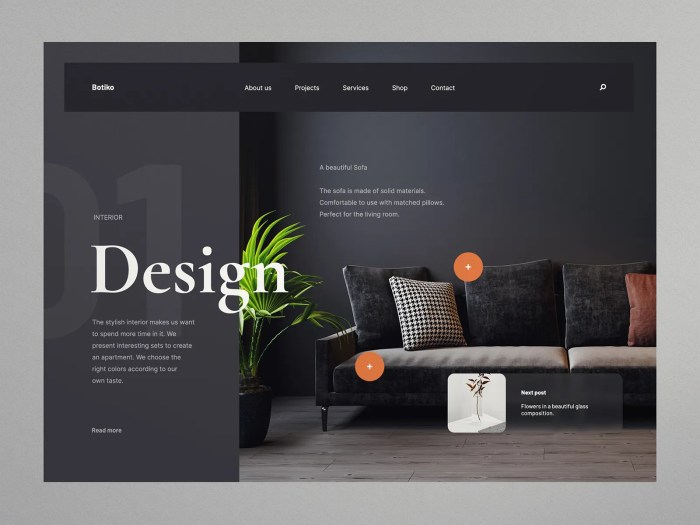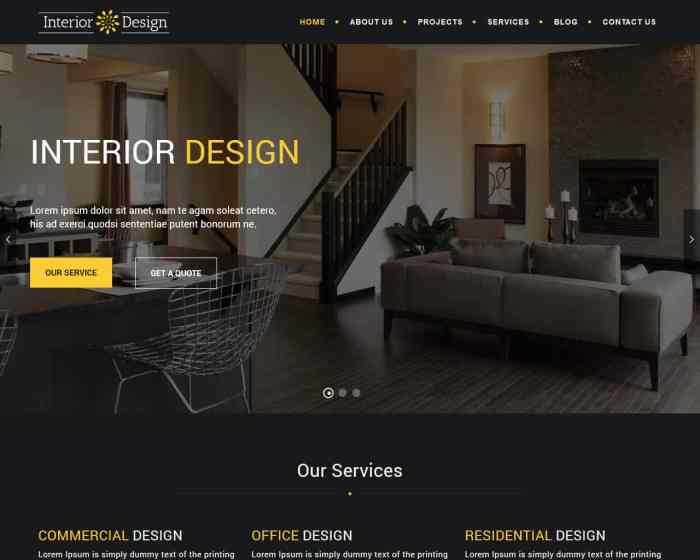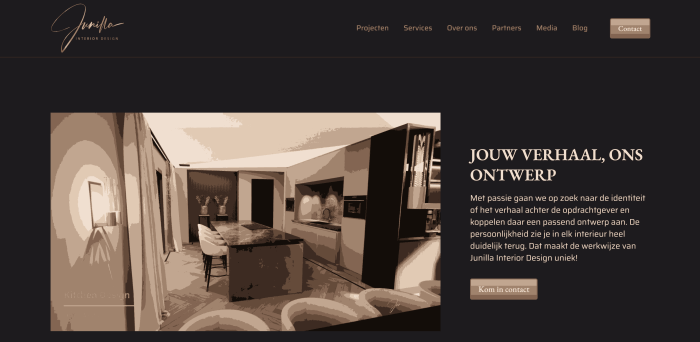Crafting an Exceptional Interior Website: A Guide to Success
Step into the world of interior websites where design meets functionality. Discover the key elements that elevate a website in the design and architecture industry, and learn how to create a visually captivating online presence that stands out from the crowd.
Introduction to Interior Websites

An interior website in the realm of design and architecture serves as a digital platform for businesses to showcase their expertise, portfolio, and services related to interior design and decoration. It acts as a virtual storefront, providing potential clients with a glimpse into the aesthetic and capabilities of the business.Having a well-designed interior website is crucial for businesses in the industry as it not only establishes a strong online presence but also helps in attracting and engaging customers.
A visually appealing website can leave a lasting impression on visitors and convey the professionalism and creativity of the business.
Key Elements of an Effective Interior Website
- High-Quality Visuals: Utilizing high-resolution images and videos of past projects to showcase the quality of work and design aesthetics.
- User-Friendly Navigation: Ensuring easy navigation and clear organization of content to help visitors find information quickly and efficiently.
- Contact Information: Displaying contact details prominently to encourage inquiries and consultations from potential clients.
- Responsive Design: Creating a responsive website that adapts to various devices and screen sizes for a seamless browsing experience.
- Client Testimonials: Featuring testimonials from satisfied clients to build credibility and trust among visitors.
Essential Features for Interior Websites
When it comes to interior websites, there are key features that are essential to ensure a successful user experience and showcase the design elements effectively.
High-Quality Images and Visuals
One of the most important features of an interior website is high-quality images and visuals that accurately represent the space. Clear and sharp images help visitors visualize the design and details of the interior, creating a lasting impression.
Easy Navigation
Another crucial feature is easy navigation. Users should be able to browse through different sections of the website seamlessly, finding information about various projects, services, and contact details without any confusion.
Responsive Design
A responsive design is essential for interior websites to ensure they look great and function well on all devices, including desktops, tablets, and mobile phones. This feature enhances user experience and accessibility.
Examples of Successful Interior Websites
Successful interior websites like Houzz, ArchDaily, and Dwell are known for their user-friendly interfaces, high-quality images, and inspiring content. These websites incorporate features like interactive galleries, project portfolios, and design tips to engage visitors effectively.
Interactive Elements
Incorporating interactive elements like 360-degree tours or virtual reality can significantly enhance the user experience on interior websites. These features allow visitors to explore spaces virtually, providing a more immersive and engaging experience.
Design Trends for Interior Websites

When it comes to interior website design, staying up-to-date with the latest trends is crucial to creating a visually appealing and engaging online presence. Let's explore some of the current design trends that are shaping the world of interior websites.
Minimalist Layouts
Minimalist layouts have been gaining popularity in interior website design due to their clean and clutter-free aesthetic. By focusing on simplicity and minimalism, these layouts allow the focus to be on the key elements of the website, such as images of interior designs or products.
Bold Typography
Another trend seen in interior websites is the use of bold typography to make a statement and create visual interest. Bold fonts can help highlight important information, create hierarchy, and add personality to the overall design.
Immersive Visuals
Immersive visuals, such as high-quality images and videos, are being used more frequently in interior website design to engage visitors and provide a more interactive experience. These visuals can showcase the beauty and details of interior designs, inspiring visitors and keeping them engaged.
User Experience and Navigation

User experience (UX) plays a crucial role in interior website design as it directly impacts visitor engagement. A well-designed user experience can make it easier for users to navigate the website, find information quickly, and ultimately increase the likelihood of them staying on the site longer.
Optimizing Navigation
- Keep navigation simple and intuitive, with clear labels and organized menus to help users easily find what they are looking for.
- Use breadcrumbs to show users their current location within the website and make it easier for them to backtrack.
- Include a search bar to allow users to quickly search for specific topics or items within the website.
- Implement a logical hierarchy of information to guide users through the site and help them understand the content structure.
Responsive Design and Mobile Optimization
Responsive design is essential for ensuring a seamless user experience across different devices, including mobile phones and tablets. By optimizing the website for mobile, you can improve accessibility and usability for users on the go. This includes elements such as easy-to-tap buttons, streamlined content, and fast loading times to enhance user experience on smaller screens.
Epilogue
As we conclude our exploration of interior websites, remember that the perfect blend of aesthetics and usability is the recipe for success in this digital age. Embrace the latest trends, incorporate engaging features, and watch your interior website flourish with visitors and potential clients alike.
Answers to Common Questions
What makes a well-designed interior website stand out?
A well-designed interior website captures the essence of the brand, showcases high-quality imagery, and offers seamless navigation for visitors.
How can interactive elements enhance user experience on an interior website?
Interactive elements like 360-degree tours or virtual reality can provide an immersive experience for users, allowing them to engage with the content in a unique way.
What role does color scheme play in interior website design?
Color schemes in interior website design can evoke specific emotions, convey brand identity, and create a cohesive visual experience for visitors.
Why is user experience (UX) important in interior website design?
UX influences how visitors engage with the website, affecting factors like navigation ease, content accessibility, and overall satisfaction with the browsing experience.